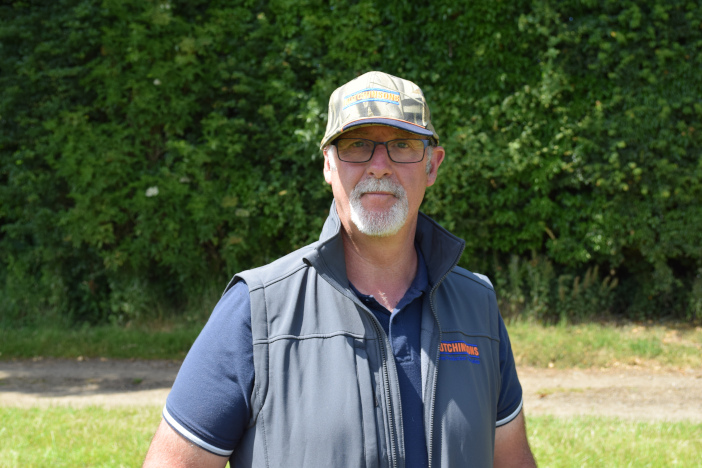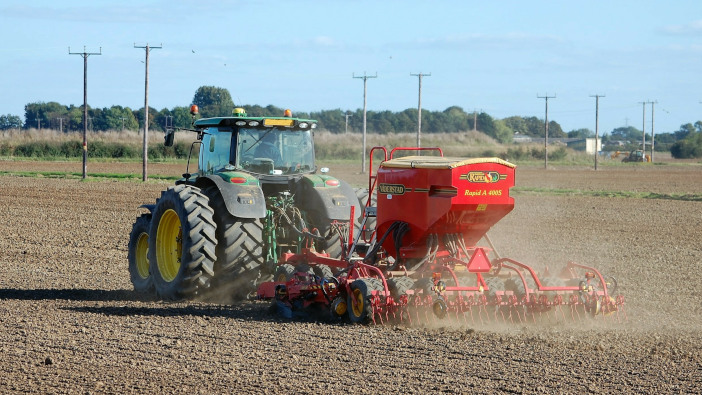Dick Neale, Hutchinsons technical manager, is urging farmers to move away from ‘drilling by weight’ this autumn, with seed rate calculations being more important than ever.
“Working out the correct seed rate is important for several reasons; soils are variable so more difficult soils must have sufficient plant numbers to maintain good average yields.
“Tillering potential is largely regulated by drilling date, and most plants carry only 1.5 ears to harvest, but 400 ears/m2 is the minimum required for good yield and 240 plants established in spring is the target, but that is frequently not achieved,” he said.
“There are many seed rate calculators available from various industry bodies including our own at Hutchinsons, and all of these use exactly the same principles of target plants established, thousand seed weight (TSW), germination % loss and predicted % field loss.”
Mr Neale believes that the greatest area of misunderstanding is that seed rates are often increased according to the target number of plants established.
“The target plant number varies very little and for late September onwards should be circa 220-240 plants/m2 surviving on 1st March.
“So arguably the target plant population should always be 240 plants/m2. The elements to adjust for are germination loss of around 4-10% and any field loss percentage.”
Calculating field loss

“At Hutchinsons we run many trials and have done for several years, it’s important to utilise and trust this database, and that data says on average, UK field losses for autumn established cereals is 33%,” said Mr Neale.
Applying this knowledge in practical terms means that for lighter soils with consistently good seedbeds, 10% may be taken off equating to 23% field loss.
“However, for heavy soils drilled later for grassweed control, add 10% which results in a 43% field loss. Most other situations could stick with the 33% average.
“From the national database, our own work at Brampton and when developing the parameters in Omnia to calculate variables in seed rate, the above figures are really not far from the reality of the situation.”
Therefore, the argument that it is difficult to estimate field losses might not be true. “It is actually possible to estimate this very accurately, and Omnia adds a whole new level of accuracy when accounting for all the variables across fields.”
The foundation period is key
Despite the long and dry summer, growers are harvesting some of the highest yields for many years on all but the lightest soils. Mr Neale believes that this is related to good establishment conditions last autumn, with good underlying soil temperatures.
“It was obvious that with the initial thickness of crop stands that many growers still drilled by weight/ha and with low TSW, a significantly higher number of seeds/m2 got drilled.
“For many years we have communicated that seed rates were not high enough and failed to account for 33% field loss, the required competition for weed control and did not allow for the variation we know exists across fields.
“So, in 2021 many growers drilled more seed, got more consistent plant stands and the ‘foundation period’ conditions allowed for strong rooting and tillering. The root mass in particular kept the crops going even as the soils dried. The icing on the cake was then high solar radiation levels to allow all the potential set-up to be realised.”
Soil temperatures at depth will remain high this year, driving winter growth, he said. “Soils are up to 150mm in moisture deficit where recent rains were missed, so will take significant rainfall before becoming ‘wet’ this autumn.
“The main known variable is that TSWs for this year are back to 51g/1000 seeds,” he points out. “So for comparison, 180kg/ha seed drilled @41g TSW = 439 seeds/m2 against 180kg/ha seed drilled @51g TSW = 352 seeds/m2.
“Allowing for germination % and average field loss this means 439 drilled seeds = 279 established plants. After winter loss of 10% = 250 plants/m2. For 352 drilled seeds = 224 established plants. After winter loss of 10% = 201 plants/m2.”
He adds that while growers adjusted the parameters of their crop inputs, it cannot be ignored that many increased their plants/m2 established by around 24%.
“Talking averages, the range of TSWs for wheat already processed this season is 43-56g and this range represents a 100 seeds/m2 difference at a standard drilled weight. Seed rates should therefore be calculated according to the above parameters of 240 plants established after at least 33% field loss.
“Once calculated and the number of seeds/m2 to be drilled is known, say 410/m2, seed should be ordered or processed on farm on the basis of 410 germinating seeds/m2 on the hectares required.
“Once the processor is aware of the batch TSW, they can calculate the amount of seed required and deliver or dress exactly the right amount of seed,” he said.
“The Hutchinsons seed rate charts apply a standard field loss for a predicted drilling date but there are then additional field loss factors to add. So for example, on the 21st Oct drilling, the basic seed rate should be @ 52g TSW = 190kg/ha.
“In a cloddy seedbed where slugs might be a factor, add 10% for slugs, and 10% for a cloddy seedbed. So therefore, total seeding rate 190 + 20% = 228kg/ha = 438 seeds/m2.”
This calculation is fundamental to getting the optimum establishment. Drilling by weight is pure guesswork, according to Mr Neale, and this change in approach is simple to achieve.
“While the best bits of fields may have improved establishment, it is the removal of variation from the poor establishing areas that can dramatically raise overall average crop performance.”
Variable seed rate drilling is one of the most impactful precision farming practise that can be implemented, and can be facilitated using the Omnia field performance planning, soil zone and variable rate planning, E-seed and Omnia Connect.


